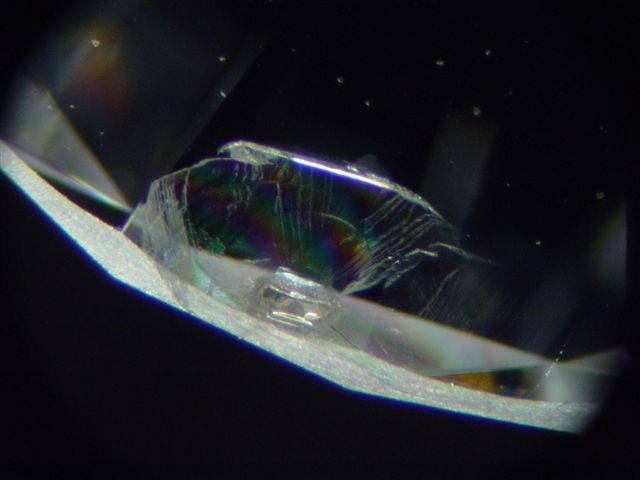Cleavage in a diamond refers to the ability of a diamond to split or fracture along specific planes due to its crystalline structure. These planes of weakness occur naturally within the diamond’s crystal lattice, and if struck in the right way, the diamond may break or cleave along these lines. Cleavage is one of the most important characteristics of a diamond’s durability and is often associated with its vulnerability to damage.
Key Facts About Cleavage in Diamonds:
What Is Cleavage?
Cleavage refers to the breaking or splitting of a diamond along natural planes of weakness. These planes correspond to the directions in the diamond’s crystal structure where the bonds between atoms are weaker.
Diamond crystals have four cleavage planes, but these are rarely all present in a single diamond. The most common cleavage occurs along one or two of these planes.
Cleavage vs. Fracture:
Cleavage is a clean, smooth break that happens along the natural crystal planes, and it often occurs when a diamond is subjected to a sharp blow.
In contrast, a fracture (or crack) is a less predictable break, which can happen anywhere in the diamond and is generally irregular rather than smooth.
Vulnerability to Cleavage:
Because of its hardness (the hardest naturally occurring material), diamonds are not prone to breaking under normal conditions, but they can be shattered if hit with a strong impact in the right direction.
Sharp impacts or blows to a diamond, especially along its cleavage planes, can cause cleavage to occur, resulting in a clean break that might be irreparable.
Impact on the Diamond’s Value:
A diamond with cleavage is considered more fragile and less valuable than a diamond without cleavage, especially if the cleavage is visible or affects the diamond’s appearance.
Diamonds that are cut too thin or with sharp corners (such as certain fancy shapes like the princess cut) are more likely to develop cleavage fractures because they have less structural strength at those points.
Inclusions and natural fractures can sometimes affect the cleavage of a diamond, especially if the inclusions are near the cleavage planes.
Preventing Cleavage:
Careful Handling: Diamonds should be handled gently and not subjected to heavy blows or sharp impacts.
Setting: The setting plays a significant role in protecting the diamond from cleavage. A setting that covers or shields the diamond’s vulnerable edges, such as a bezel setting, can help prevent accidental damage.
Cleaning: Use gentle methods for cleaning diamonds. Ultrasonic cleaners or steam cleaners can sometimes cause stress to the diamond, leading to cleavage if the diamond is already weakened by a flaw.
Signs of Cleavage:
If a diamond has been damaged by cleavage, you may notice sharp, clean breaks at specific points along the diamond’s surface. These breaks are usually smooth and can sometimes be seen with magnification.
How to Avoid Cleavage-Related Damage:
When buying a diamond, especially a fancy-shaped diamond, it’s essential to ensure that the diamond is cut well to avoid thin or sharp points, which could make it more susceptible to cleavage.
Professional diamond setting and proper care and handling are critical to preventing damage to your diamond from impact.
Repairing Cleavage Damage:
If a diamond suffers cleavage, it cannot typically be repaired to its original state. However, re-cutting the diamond may be an option in some cases, though this could result in a reduction of carat weight.
In some cases, the diamond may be set in such a way that the cleavage is not visible, such as by using protective settings or prongs to shield the affected area.
